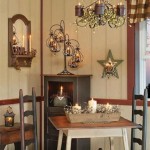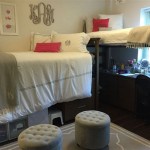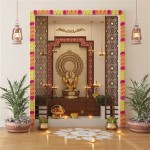Preschool Decoration Ideas: Creating an Engaging and Educational Environment
Preschool decorations play a crucial role in fostering a stimulating and supportive learning environment for young children. The visual elements within a preschool classroom can significantly impact a child's mood, engagement, and overall learning experience. Careful consideration should be given to selecting decorations that are not only visually appealing but also educational, age-appropriate, and contribute to a safe and functional space.
Decorating a preschool classroom is more than simply making it look attractive. It's about creating a space that encourages exploration, creativity, and a love of learning. The decorations should be thoughtfully chosen to support the curriculum, promote social interaction, and provide a sense of comfort and belonging for each child. A well-decorated preschool classroom can also serve as a valuable tool for teachers, providing visual aids and reinforcing learning concepts.
This article will explore various preschool decoration ideas, focusing on creating an environment that is both engaging and educational. It will delve into key principles of design and provide practical suggestions for incorporating these principles into the classroom setting. This resource aims to provide educators and caregivers with valuable insights to transform their preschool spaces into thriving hubs of learning and discovery.
Prioritizing Safety and Accessibility
Before embarking on any decoration project, it is paramount to prioritize the safety and accessibility of the preschool environment. Decorations should never pose a hazard to children and must adhere to all relevant safety regulations and guidelines. This includes ensuring that all materials are non-toxic, durable, and securely attached to surfaces. Small, detachable pieces that could be choking hazards should be avoided entirely.
Accessibility is another crucial consideration. Decorations should not obstruct pathways or create barriers for children with mobility challenges. Items should be hung at appropriate heights, allowing children to easily interact with them without needing to reach or strain. Consider the varying physical abilities of the students and ensure that the decorations are inclusive and accessible to all.
Sharp edges and corners should be avoided or adequately covered with protective guards. When using paint, ensure it is lead-free and specifically designed for children's environments. Regularly inspect decorations for any signs of wear and tear and promptly address any issues to prevent accidents. Creating a safe and accessible environment is the foundation upon which all other decoration efforts should be built.
The placement of decorations should also consider the potential for distractions. Avoid placing overly stimulating or visually complex decorations in areas where children are expected to focus on specific tasks, such as reading or writing. Keep these areas relatively clutter-free to promote concentration and minimize sensory overload.
Incorporating Educational Elements
Preschool decorations can serve as powerful educational tools, reinforcing learning concepts and promoting a love of discovery. By strategically incorporating educational elements into the classroom décor, teachers can create a visually stimulating environment that supports the curriculum and enhances children's understanding of the world around them.
One effective approach is to create themed learning centers. For example, a nature center could feature posters of different animals and plants, along with real-life natural elements such as leaves, rocks, and seashells. A literacy center could include alphabet charts, word walls, and displays of children's artwork related to specific books. These themed centers provide children with opportunities to explore and learn about different topics in an engaging and hands-on way.
Another way to incorporate educational elements is to use visual aids such as number lines, shape charts, and color wheels. These visual aids help children to grasp fundamental concepts and provide them with a constant reference point. Decorate the walls with maps of the world or the local community to introduce children to geography and their surroundings. Consider using bilingual labels and signage to expose children to different languages and cultures.
Children's artwork should also be prominently displayed in the classroom. This not only celebrates their creativity but also reinforces their learning and provides them with a sense of ownership and pride. Rotate the artwork regularly to keep the display fresh and engaging. Encourage children to create their own decorations, such as paper chains, painted banners, and collages, to further personalize the classroom environment. This helps them feel a sense of responsibility and ownership in their learning area.
Consider incorporating interactive elements into the decorations. For example, a large felt board with movable letters and shapes can encourage children to practice their spelling and problem-solving skills. A sensory wall with different textures and materials can provide tactile stimulation and promote sensory exploration. These interactive decorations encourage children to actively engage with their environment and learn through play.
Utilizing Color and Natural Light Effectively
Color and natural light play a significant role in shaping the mood and atmosphere of a preschool classroom. Selecting the right color palette and maximizing natural light can create a visually appealing and stimulating environment that promotes learning and well-being. Thoughtful consideration should be given to the psychological effects of different colors and how they can impact children's behavior and emotions.
Soft, muted colors such as light blues, greens, and yellows are generally preferred for preschool classrooms. These colors create a calming and soothing atmosphere, promoting relaxation and concentration. Avoid using bright, intense colors in large quantities, as they can be overstimulating and lead to restlessness. Instead, use brighter colors sparingly as accents to add visual interest and highlight specific areas.
Consider incorporating natural elements into the décor, such as plants, wooden furniture, and woven baskets. These elements add warmth and texture to the classroom and create a connection to the natural world. Plants can also help to purify the air and improve the overall atmosphere of the space. Avoid using artificial plants that can collect dust and create an unnatural look.
Maximize the amount of natural light in the classroom by keeping windows clean and unobstructed. Natural light is essential for children's health and well-being and can significantly improve their mood and concentration. If natural light is limited, supplement it with artificial lighting that mimics natural daylight. Avoid using harsh fluorescent lighting that can cause eye strain and headaches.
Use lighting strategically to create different moods and atmospheres in different areas of the classroom. For example, a reading corner could have soft, warm lighting to create a cozy and inviting space. A play area could have brighter, more stimulating lighting to encourage activity and engagement. Consider using dimmer switches to adjust the lighting according to the specific needs of the activity.
When choosing window coverings, opt for sheer curtains or blinds that allow natural light to filter through while still providing privacy. Avoid using heavy, dark curtains that can block out natural light and create a gloomy atmosphere. Consider using window clings or decals to add visual interest and promote learning. These decorative elements can be easily removed and replaced as needed.
The arrangement of furniture and decorations should also consider the direction of natural light. Avoid placing furniture in a way that blocks natural light from reaching other areas of the classroom. Position seating areas near windows to allow children to benefit from the natural light while they are learning and playing.
By carefully considering the use of color and natural light, preschool teachers can create a visually appealing and stimulating environment that promotes learning, well-being, and a positive classroom atmosphere.

40 Attractive Kindergarten Classroom Decoration Ideas To Make It Look Catchy Talkdecor Decor Preschool Ceiling Decorations

Classroom Decoration Ideas For High School To Elementary Preschool Decor Kindergarten Rainbow Theme

7 Amazing Classroom Decoration Ideas For Kindergarten

Fall Classroom Decoration Ideas For Preschool Teachersmag Com

Top 7 Preschool Classroom Decorations Do S And Don Ts

12 Preschool Classroom Themes To Welcome The Littlest Learners

Decorationclassroom Homeschool Crafts Preschool School

11 New Fall Classroom Door Decoration Ideas For Preschool

Preschool Decoration Ideas Classroom Design Paperwork Hanging

586 Free Preschool Bulletin Board Ideas Classroom Decorations Supplyme







